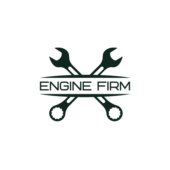Trucks are the backbone of the transportation industry, carrying goods across cities, states, and countries. For truck owners and fleet managers, maintaining these vehicles is not just a routine task — it’s an essential investment. Proper truck maintenance ensures safety, reduces downtime, lowers repair costs, and most importantly, extends the life of the vehicle. In this article, we’ll explore why truck maintenance matters, key maintenance practices, and how adopting the right strategies can maximize the longevity and performance of your truck.
Why Truck Maintenance Is Crucial
Trucks endure tough conditions: long hourcheaps on the road, heavy loads, and varying weather. Over time, this wear and tear can cause mechanical failures or breakdowns if maintenance is neglected. Proper maintenance helps identify problems before they escalate, ensuring the truck runs efficiently and safely.
Moreover, a well-maintained truck reduces operational costs by improving fuel efficiency, avoiding costly repairs, and preventing unexpected breakdowns that can lead to lost business. For commercial operators, maintenance isn’t just about preserving the vehicle — it’s about protecting their bottom line and reputation.
The Impact of Neglecting Maintenance
Neglecting truck maintenance can lead to severe consequences:
- Frequent Breakdowns: Minor issues like low fluid levels or worn-out brake pads can cause engine overheating or brake failure.
- Decreased Fuel Efficiency: Poorly maintained engines and tires consume more fuel, increasing expenses.
- Safety Hazards: Faulty brakes, worn tires, or malfunctioning lights can lead to accidents.
- Shortened Vehicle Lifespan: Ignoring routine upkeep accelerates deterioration and leads to premature truck retirement.
- Higher Repair Costs: Small fixes left unattended often result in major repairs or component replacements.
Clearly, proactive maintenance is a smarter and safer approach.
Key Components of Truck Maintenance

1. Regular Oil Changes
Oil lubricates engine components, reduces friction, and helps dissipate heat. Over time, oil degrades and accumulates dirt, reducing its effectiveness. Regular oil changes prevent engine wear, overheating, and costly damage. Most manufacturers recommend oil changes every 5,000 to 7,000 miles or based on engine hours.
2. Tire Care and Rotation
Tires support the truck’s weight and absorb road shocks. Maintaining proper tire pressure ensures optimal fuel efficiency, better handling, and longer tire life. Uneven tire wear can indicate alignment or suspension issues. Rotating tires every 6,000 to 8,000 miles promotes even wear and extends their usability.
3. Brake System Inspection
Brakes are critical for safety. Regularly check brake pads, discs, and fluid levels. Worn brake pads reduce stopping power and increase the risk of accidents. Brake fluid can absorb moisture over time, leading to corrosion and brake failure. Prompt repairs keep the braking system reliable.
4. Fluid Checks and Replacement
Beyond engine oil, trucks rely on several fluids — coolant, transmission fluid, power steering fluid, and differential fluid. Each plays a vital role in system performance and protection. Regularly checking and replacing fluids prevents overheating, transmission issues, and steering problems.
5. Battery Maintenance
Truck batteries provide the power to start the engine and run electrical systems. Corroded terminals, loose connections, or low charge can cause starting problems. Regular cleaning and testing ensure the battery stays in good condition.
6. Air Filter Replacement
Air filters prevent dirt and debris from entering the engine. A clogged filter reduces engine performance and fuel economy. Replacing air filters regularly helps maintain optimal engine function. Additionally, keeping your truck clean is just as important as mechanical upkeep — to remove grime and prevent corrosion, get your RTA truck wash regularly, ensuring the exterior and undercarriage stay free of damaging buildup.
7. Suspension and Steering Checks
The suspension system absorbs shocks and maintains vehicle stability. Inspect shocks, struts, and steering components for wear or damage. Faulty suspension affects ride quality, handling, and tire wear.
8. Lighting and Electrical Systems
Proper lighting is crucial for visibility and legal compliance. Check headlights, taillights, indicators, and brake lights regularly. Electrical wiring and connections should also be inspected for damage or corrosion.
Developing a Maintenance Schedule
Creating a structured maintenance schedule tailored to your truck’s make, model, and usage pattern is essential. Fleet management software or simple logs can track service intervals and repairs, helping avoid missed inspections.
Here’s a sample maintenance timeline to consider:
- Engine Oil Change: Every 5,000 to 7,000 miles or according to the manufacturer’s recommendation.
- Tire Rotation & Pressure: Rotate tires every 6,000 to 8,000 miles; check tire pressure monthly.
- Brake Inspection: Every 10,000 miles or sooner if you notice any issues.
- Fluid Levels Check: Monthly or every time you change the oil.
- Air Filter Replacement: Every 15,000 to 30,000 miles.
- Battery Testing: Every 6 months or during seasonal changes.
- Suspension Check: Every 15,000 miles or as needed.
- Lighting Inspection: Monthly or before long trips.
Sticking to this plan reduces the risk of unexpected breakdowns and extends the truck’s useful life.
Benefits of Proper Truck Maintenance
1. Increased Vehicle Longevity
Regular upkeep prevents excessive wear and tear, allowing trucks to operate efficiently well beyond their average lifespan. Trucks that receive timely maintenance often exceed 1 million miles, providing better return on investment.
2. Improved Safety
Well-maintained trucks have reliable brakes, steering, and tires, reducing accident risks. This protects drivers and other road users.
3. Better Fuel Efficiency
Properly inflated tires, clean air filters, and efficient engines consume less fuel, lowering operating costs and reducing environmental impact.
4. Reduced Repair Costs
Catching issues early prevents minor faults from escalating into costly repairs or full system failures.
5. Enhanced Resale Value
Trucks with detailed maintenance records sell at higher prices, as buyers trust their condition.
The Role of Technology in Truck Maintenance
Modern trucks and fleet managers benefit from advanced technology that simplifies maintenance:
- Telematics Systems: These provide real-time data on vehicle health, mileage, fuel consumption, and driver behavior, helping schedule preventive maintenance.
- Diagnostic Tools: Electronic diagnostic systems quickly identify engine or system issues, reducing downtime.
- Fleet Management Software: Helps track maintenance schedules, service history, and parts inventory.
Leveraging these tools ensures trucks receive timely care and improves fleet efficiency.
Tips for Truck Owners and Fleet Managers
1. Train Drivers on Basic Checks
Drivers should be empowered to inspect tires, fluid levels, lights, and brakes daily. Early detection of issues saves time and money.
2. Use Quality Parts and Fluids
OEM (Original Equipment Manufacturer) or high-quality aftermarket parts ensure compatibility and durability.
3. Keep Detailed Maintenance Records
Accurate logs help track repairs, warranties, and service intervals, simplifying resale and compliance.
4. Partner with Reliable Service Providers
Choose trusted mechanics or service centers experienced in heavy-duty truck maintenance.
5. Plan for Seasonal Changes
Prepare trucks for weather variations by checking antifreeze levels, tire tread, and battery condition, especially before winter.
Conclusion
Proper truck maintenance is not an optional expense but a vital practice that significantly extends the lifespan of trucks while enhancing safety and operational efficiency. By committing to regular inspections, timely repairs, and using quality parts, truck owners and fleet managers can avoid costly breakdowns, improve fuel economy, and safeguard their investment.
As trucks continue to play a crucial role in global commerce, the discipline of maintenance will remain the key to keeping these powerful machines behind the wheel — ready to deliver, mile after mile.

